This post is also available in:
日本語 (Japanese)
In Sendai, A MUSE for Everyone (April 13, 2024)
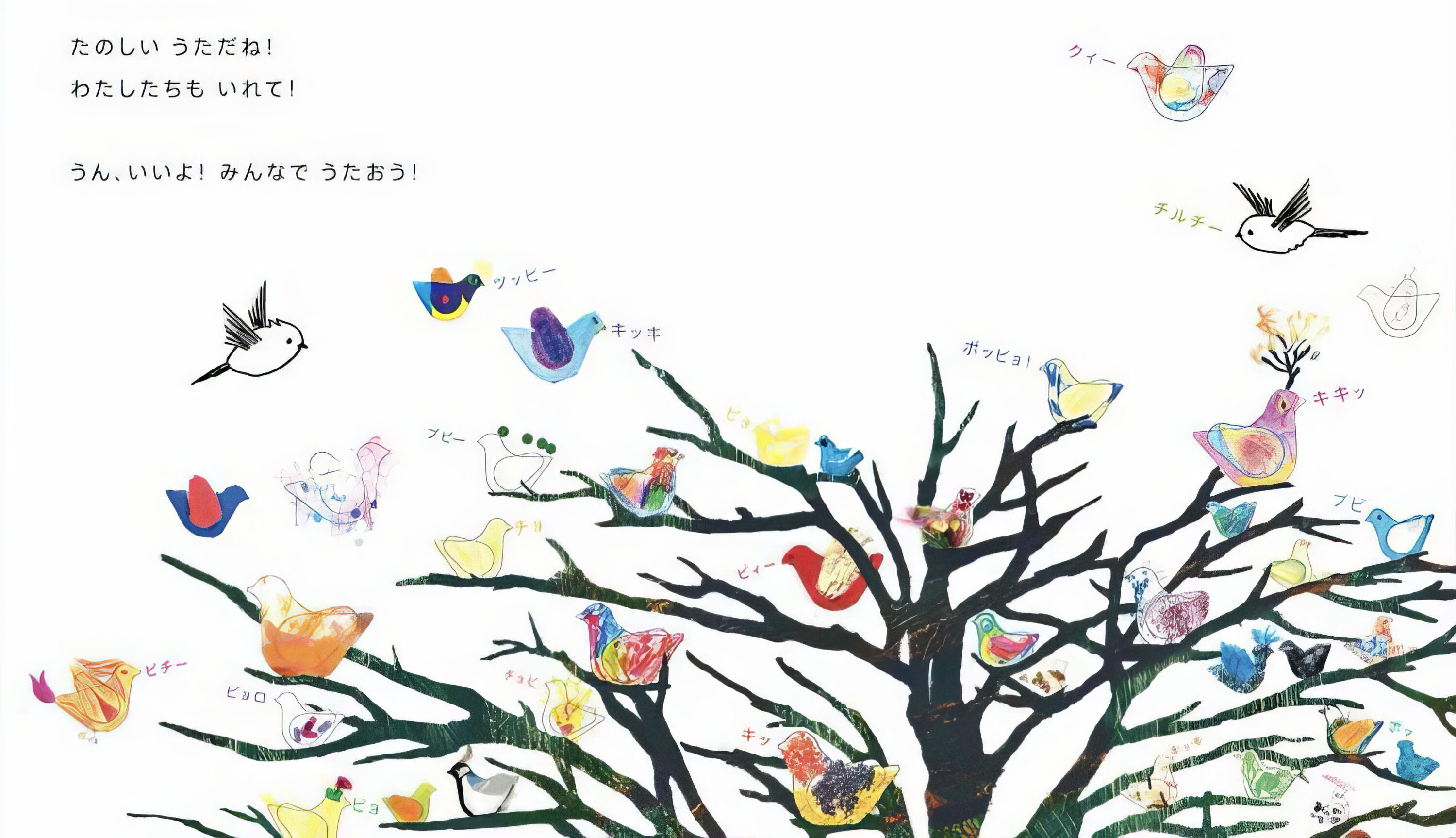
MUSE is a certified NPO founded in Sendai City by pianist Atsuko Nishina in 2001 to increase the opportunities for people with special needs to touch highly artistic music and art and express themselves freely through artistic creative activities. MUSE provides private and group lessons in music and art to children, as well as some adults, with autism and disabilities. 80 to 90 times a year, MUSE also brings live music by professional musicians and classes with music therapists to hospitals and educational institutions throughout Miyagi Prefecture.
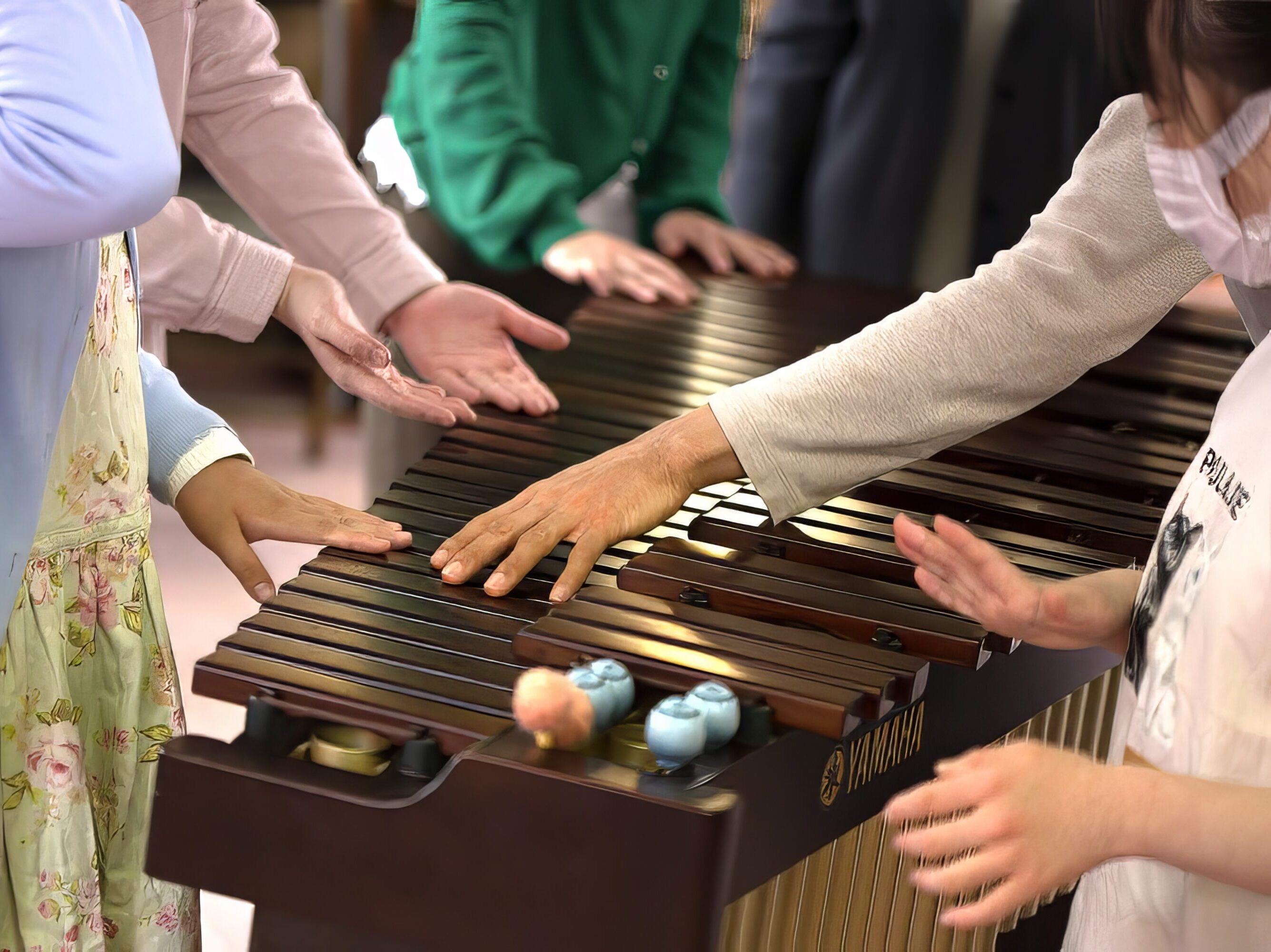
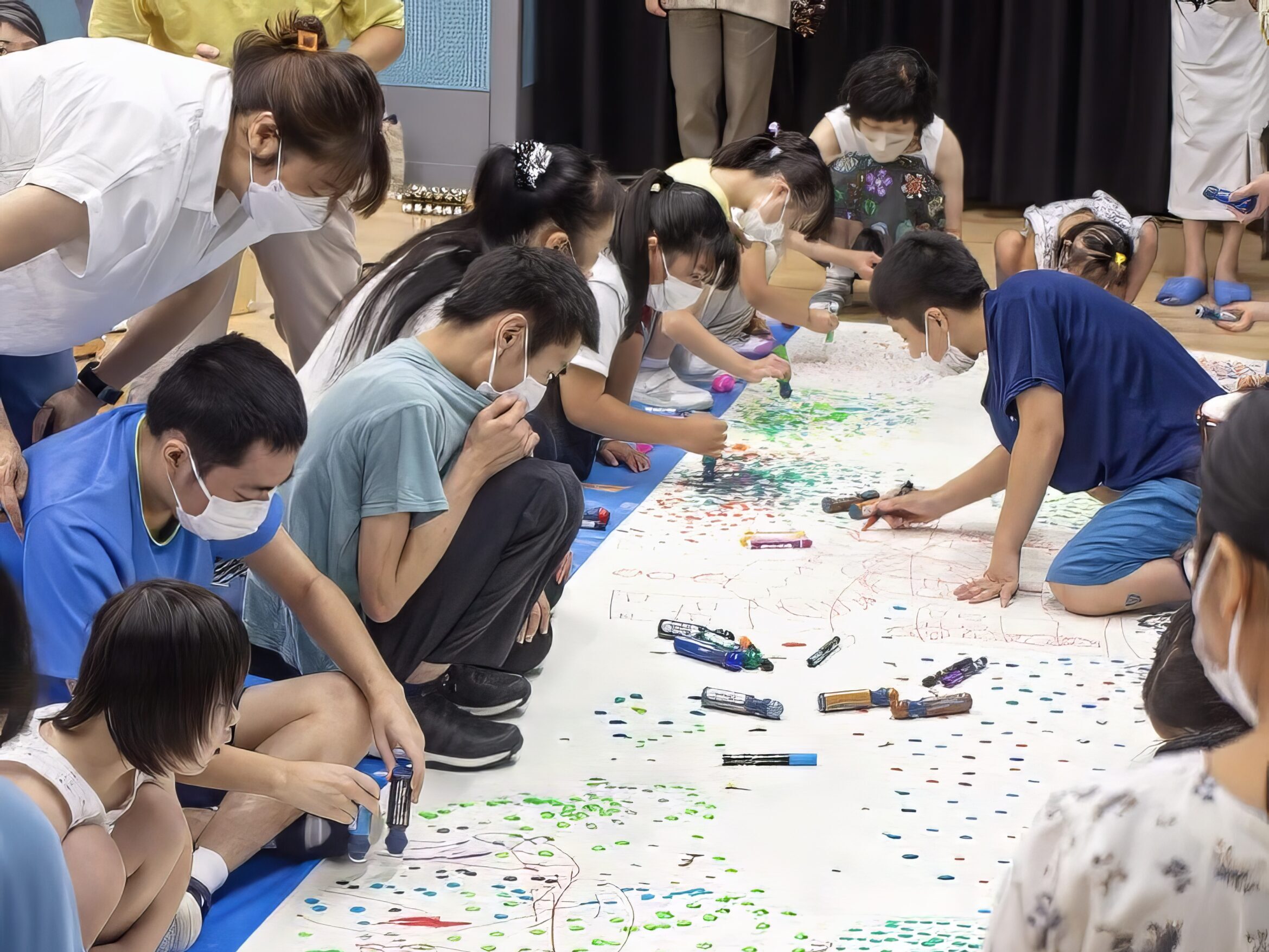
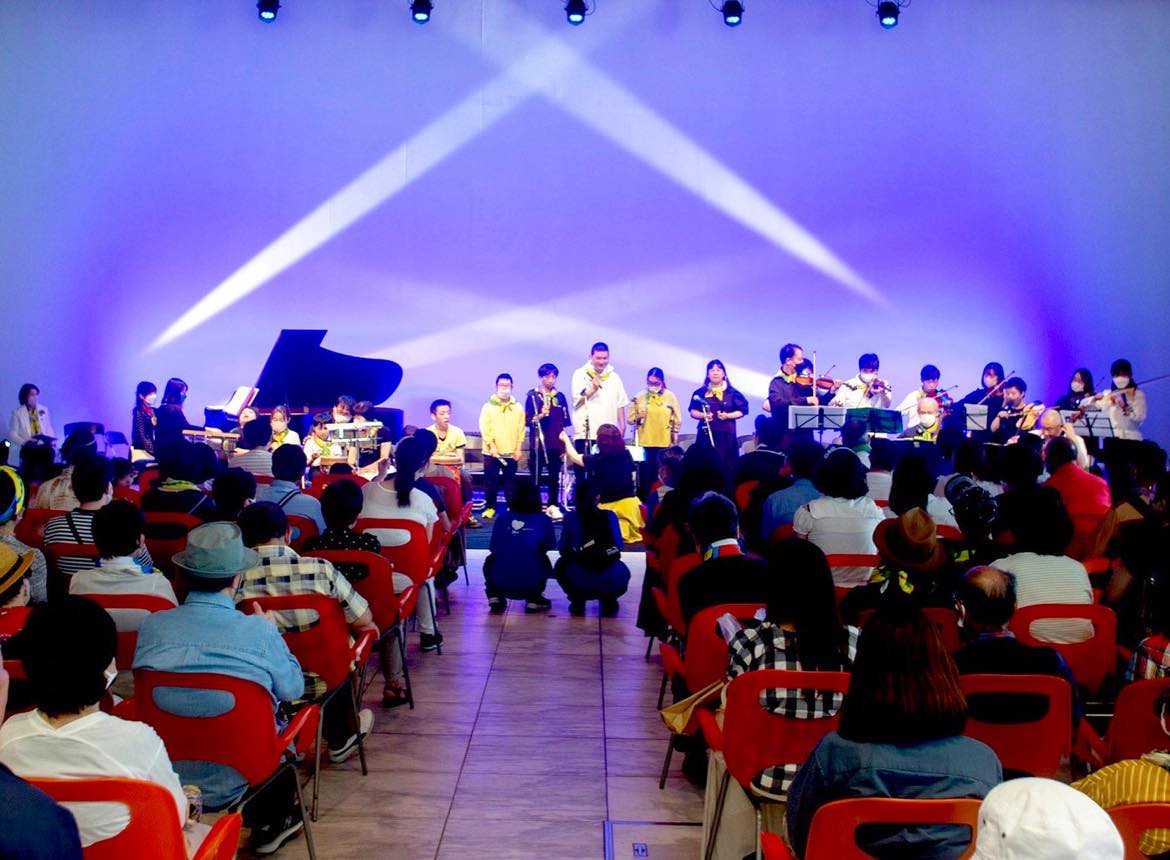
MUSE concert
Kotori Forest Project
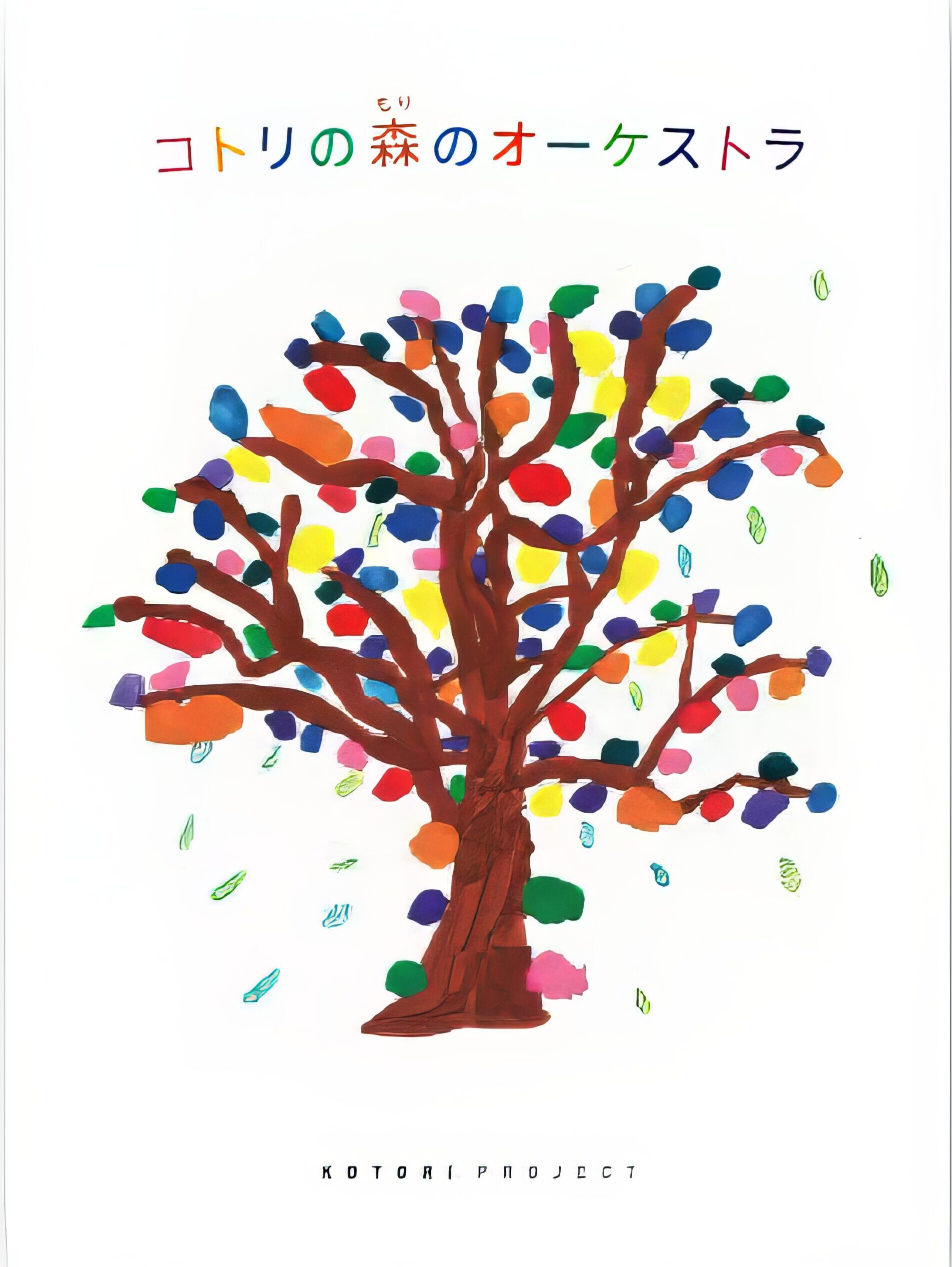
Kotori Forest Orchestra book cover

Kotori Forest Orchestra book bird drawings
MUSE Music Lessons
Back in Sendai, she began contributing more to MUSE and teaching at local universities. Aya has served as the artistic director for the organization since its founding in 2001, but since returning, she has also been teaching and composing for the students. Many of the MUSE students and families were deeply affected by the 2011 disaster. Inspired by a number of her mentors (such as John Zorn, Ryuichi Sakamoto, Joel Chadabe, Terry Riley, and Julia Wolfe) who had dedicated themselves to nurturing younger artists as well as their communities, Aya realized that she wanted to play a similar role in supporting the ongoing healing and recovery process of the MUSE community. In fact, doing so has enabled her to fulfill her dream of aligning her composing and teaching work.
When we arranged my visit to meet with her in Sendai, Aya suggested that I also visit the school and meet some of the students and their families. The day she brought me to MUSE, she first introduced me to a boy who comes to study composition with her. Although he struggles to retain information, he is keen to learn to write lyrics in English to go with his music, so, as part of his lesson that day, Aya suggested that he and I ask one another three questions in English and answer. She would assist as translator as needed. The first question I asked him was what makes him happy. He took his time to think and replied that he found happiness in feeling gratitude for each moment of the day as it is. Although differently abled, he is a wise and grounded child, as much a teacher as a student.
The second student I observed was studying piano with her. He comes weekly, sits at the piano with Aya, and improvises with her. This week, Aya said he had just started back to school after a vacation. He seemed to have an excess of energy. Perhaps my presence made him feel unsettled.
Rising from the piano, he began to move around the room, drumming on various objects, jumping, throwing his arms in the air, dancing. Abruptly, he would come right up to me and stare. I mirrored him, moved with him. He would sometimes return to the piano, bringing his face extremely close to Aya’s and staring into her eyes without regard to her personal space. Aya never flinched or missed a beat. It would have been so easy for Aya or anyone in her place to panic, become impatient, and give in to the impulse to assert control or give up. Rather than judging him or doubting herself, she accepted whatever he did and joined him continually, confidently, calmly.
I cannot stress enough how impressed I was and how enlivening the experience was. I believe that Aya’s ability to create a safe and sacred space for her student to express himself and be himself without feeling judged, while also maintaining her identity as a music teacher and the structure of lesson time, must provide him with vital and transformative encouragement to continue exploring and developing his musical talent in his own way. And his playing, when he did play, was so demonstrative, so surprising, and expressive that it is clear that he has his own music inside him and the talent to play it.
MUSE Art Class
One boy methodically stamps dots with the tip of his paintbrush, never breaking rhythm except to change color. Little by little, a scene comes into view. One girl, confined to a wheelchair, rolls balls in paint over her canvas inside a box, which her mother helps her hold. She and her mother always appear so happy and radiant.
Another boy creates a vivid abstract painting and then confidently begins layering darker, more muted colors over it, changing the character entirely. Shimpei told me that he himself would be hesitant to transform such a lovely painting in this way and asked the boy if he was sure he wanted to do that, but the boy proceeded with confidence. They all seem to follow their instincts to realize their inner visions free of self-doubt. Just as with the two private students who came earlier, these students, by being completely present, set an excellent example and brought joy to all of us adults.
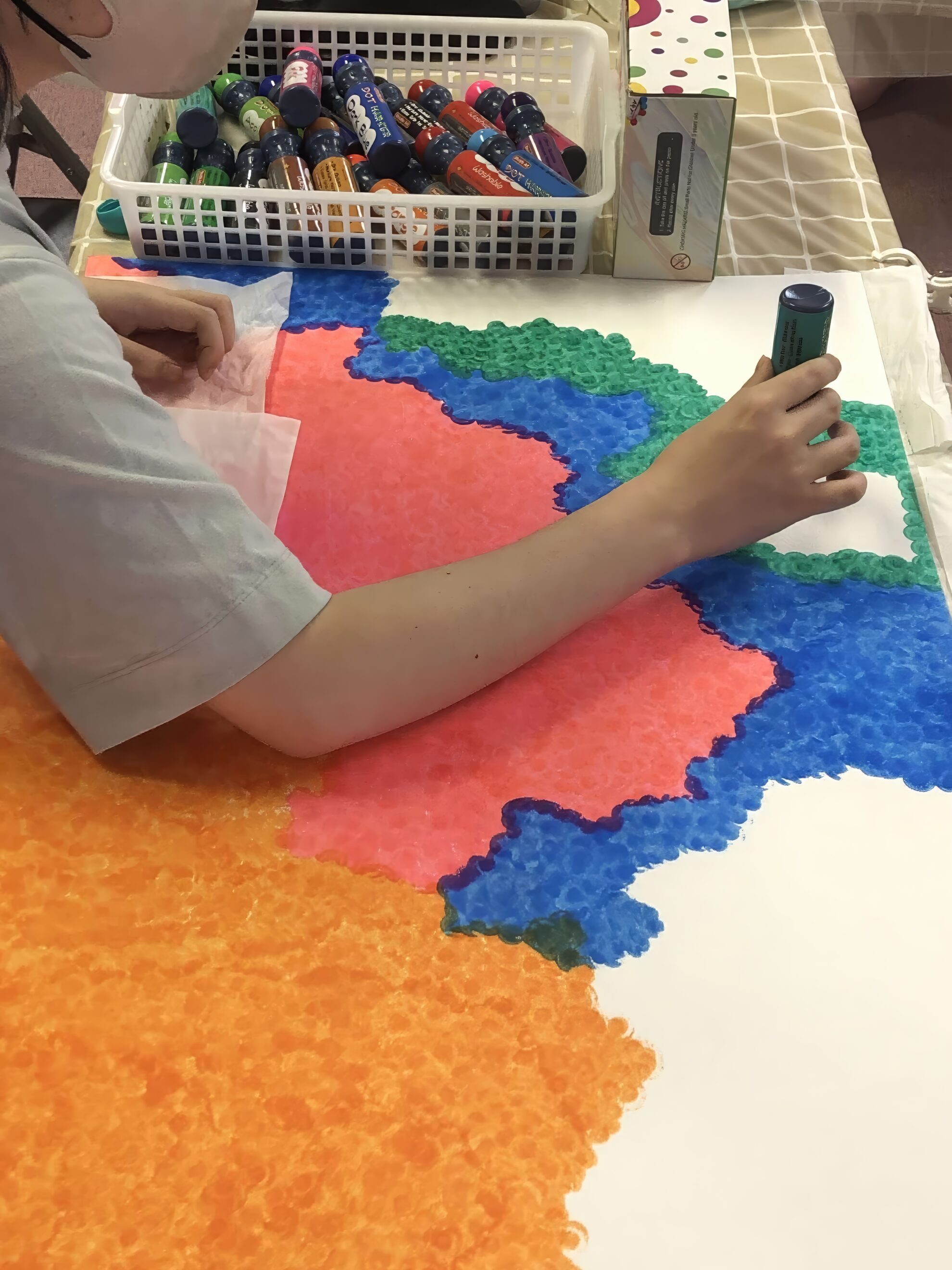
MUSE art class
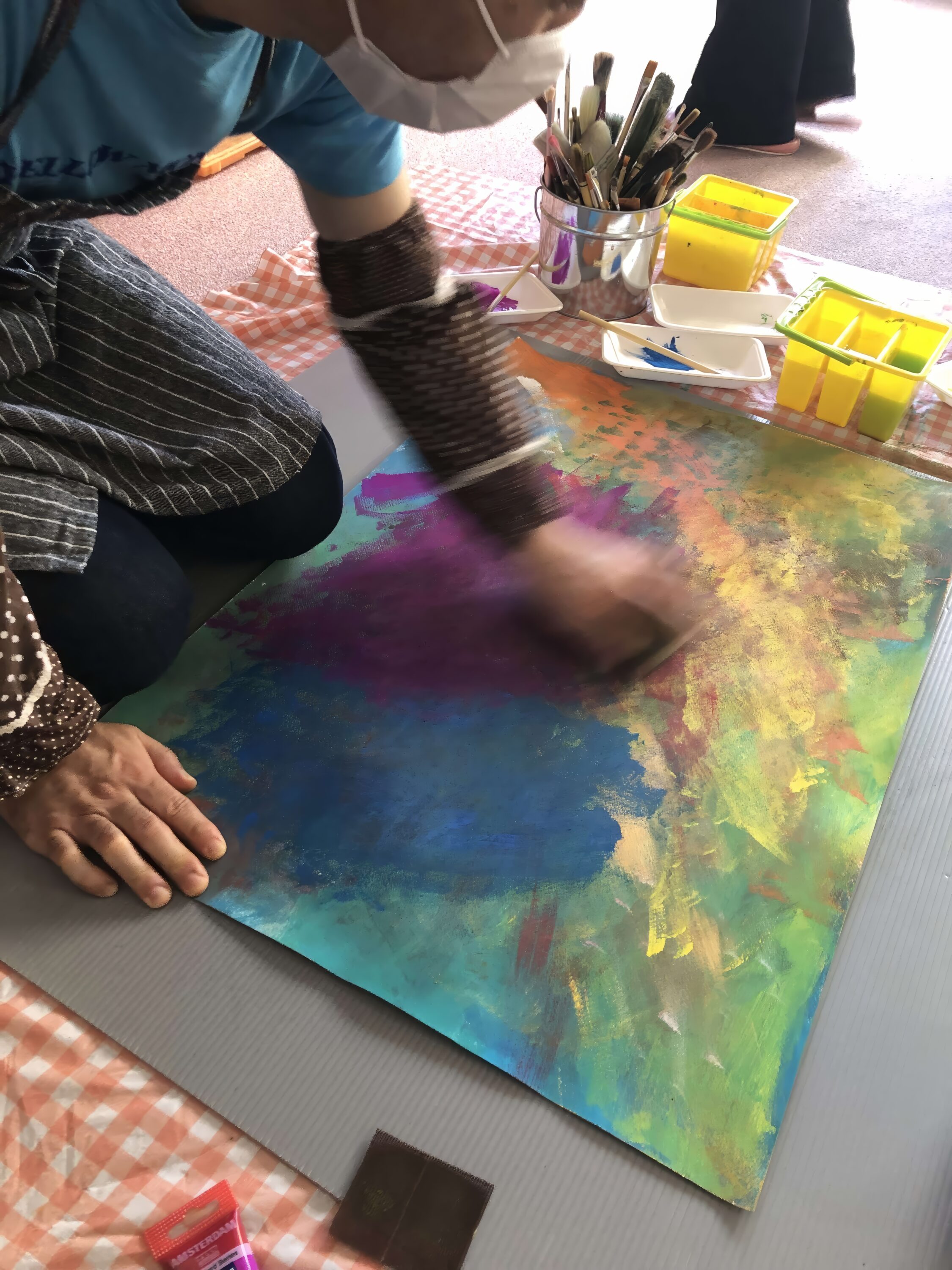
MUSE art class
Aya Nishina's "Flora"
Yet, I could see that Aya’s work with the shining students of MUSE has been an extraordinary opportunity for her, inspiring and healing. There is nowhere to hide in this work, no possibility of showing up halfway and getting by. By committing to being fully present with each child every time, as Aya and the other MUSE instructors are doing, they receive the gift of regularly experiencing that they can always be present and can always bring forth the best of themselves, regardless of what else has been going on in their lives or how they might feel. This is a great gift indeed.
Aya’s partner, Shimpei — a renowned visual artist with works in the permanent collections of the International Center of Photography, New York; the San Francisco Museum of Modern Art; the Museum of Fine Art, Boston; the Kadist Art Foundation, Paris; Tokyo Photographic Art Museum; and the Amana Photo Collection, Tokyo — had been living in NY with Aya and moved with her to Sendai. He has continued to pursue his own artistic projects, but Sendai is not a center of the visual art world either, and his art career, like hers, has also slowed. Yet, I could see that Shimpei has also found the opportunity to work with the MUSE students to be such a gift. Like the students he and Aya support, I sense no resentment in either of them.
Although relocating to Sendai may have rendered Aya and Shimpei less visible to the international art community recently, their contributions continue to be as profound and vital as ever. If there is one thing that traveling reinforces, it is that creators and healers can be found everywhere, regardless of where the spotlight shines. We needn’t wilt when the winds of fate catch us up and carry us off. Wherever we land, love lies there; opportunity abounds; spirit persists. I can’t help thinking of Bilbo’s poem about Aragorn in The Fellowship of the Ring:
All that is gold does not glitter,
Not all those who wander are lost;
The old that is strong does not wither,
Deep roots are not reached by the frost.
I first encountered Aya’s deep roots through her choral work “Flora,” the final track of her debut album of the same name, released in 2013 by the label Tzadik. Aya composed the track “Flora” in memory of the Great East Japan Earthquake, Tsunami, and Ongoing Nuclear Disaster of March 11, 2011, which had catastrophically struck her hometown. The ego will often try to make one feel too small, too ineffectual to respond to so much loss. Aya avoided that trap. By grounding herself in spirit, she could safely open herself up to the enormity and entirety of the disaster experience and channel a response infused with universal love.
Interweaving themes of loss, nature, and spirituality, “Flora” lushly layers the voices of Gretchen Parlato, Becca Stevens, Monika Heidemann, and Sara Serpa — with whom I would later have the privilege of working closely as a sponsor of Mutual Mentorship for Musicians (M³). The lyrics — invocation, mantra, and elegy in one — and droning harmonies repeatedly wash over the listener, creating an otherworldly soundscape in which one feels in the presence of not four but innumerable loving souls, gently inviting one to pour out all of one’s own feelings, to feel and process them while safely in communion with these other voices until one’s feelings are washed away, leaving one in a silent state of peace. It’s a work of breathtaking beauty in the face of unspeakable tragedy.
This world is once and one
One..
Once undone perhaps—
(so) undo to onePapa.. Mama..
Fauna.. Flora..
Undo to one;
for the beauty you are
We live, and we die. What we make is unmade. We are bound together by this shared perception. But so, too, are we bound together by the shared underlying reality of Oneness. Losing everything, we re-discover what can never be lost.
Shimpei Takeda's "Trace"
After several months of exposure, depending on the amount of radioactive material in the soil samples, the results resembled images of the night sky: scattered stars, constellations, cloudy nebula. Although these images are beautiful in a way, they are chilling in their implication: due to the recklessness of humans, harmful, invisible radiation has contaminated much of the region. Nevertheless, Shimpei’s determination to face, rather than look away from, the widespread contamination enables these images to communicate an ultimately life-affirming message: deep empathy for the people and the land. By contextualizing the tragedy as one of many that humans have endured throughout history, he reminds us of our shared experience, our interconnectedness, and our strength.
By facilitating these opportunities for differently abled children, Aya, Shimpei, and the rest of the MUSE team enable their students to meet and explore their inner artist. Moreover, the students get to experience being in community with one another. They get to share something precious with their families. They get to share their gifts with the larger world. And as they share their work around the region, the community at large sees that even though these children are differently abled, they are fully capable of expressing beauty, creativity, and love. As are we all. Through sharing their unique expressions, MUSE and its students remind us that we are all the same. And isn’t that the true mission of art?
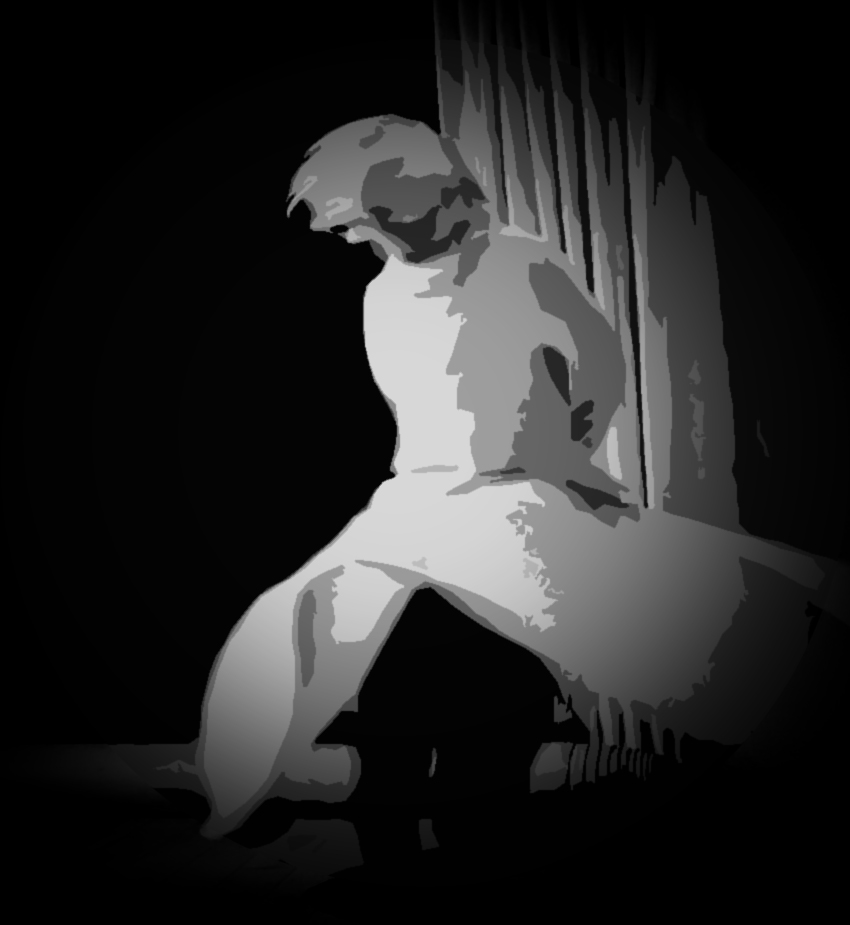
0 Comments